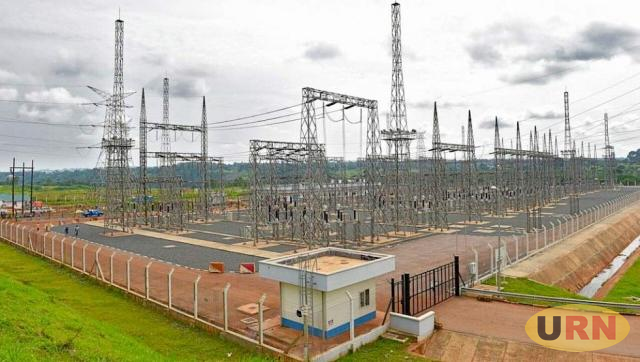Jinja. The Electricity Regulatory Authority on Friday announced the electricity tariffs for the first quarter of 2024. As expected, the new tariffs did not reflect a big change from the ones announced at the end of 2022, April 2023, and what existed at the close of 2023.
The 2024 tariffs announced by the Electricity Regulatory Authority’s Board Chair, Dr. Sarah Kanaabi Wasagali maintained two hundred and fifty shillings tariffs for the initial 15 units of electricity for domestic consumers.
Commercial consumers have had their tariffs reduced by nearly 2% from shillings 611 to 600. In the medium category, the tariffs will drop from 461 shillings and eight cents to shillings 448 and seven cents.
The new tariffs follow the approval of cost submitted by Umeme Uganda Ltd. Uganda Electricity Transmission Company Limited (UECTL), Uganda Electricity Distribution Company Limited, and Uganda Electricity Generation Company Limited. These utility providers submitted their costs in trillions of shillings for operational and generation costs.
The Minister of Energy, Ruth Nankabirwa at the end of December 2022 promised a progressive gradual end-user tariff for domestic and commercial consumers to support industrialization for socio-economic transformation and improved welfare of society.
She then announced a weighted average tariff reduction of 1.2% at the time. On Friday, she announced a weighted average tariff reduction of 1.6% for tend-user tariffs for quarter one of 2024.
But a section of the public including the President has complained about the tariffs. Electricity represented only around 2% of Uganda’s total energy consumption by the end of 2023.
Electricity access statistics indicate that only 20% of the country’s population has access to the electricity grid.
While ERA has for some years been reducing the tariffs by percentage points, there is a concern that Uganda’s electricity tariffs are still high compared to other countries in the region and Africa.
The International Energy Agency last year observed that Uganda continues to have one of the lowest electricity access rates in sub-Saharan Africa due, in part, to connection costs that are too high for most potential customers.
“Even when connections have been subsidised, consumption typically has been low, due largely to the high cost of power. Low consumption makes it challenging to fund grid maintenance and expansion, as well as to maintain grid stability on long, low-demand networks” said an IEA report in 2023.
A report developed by the Ministry of Energy with the support of the International Energy Agency (IEA) found that the cost of most of the country’s existing oil-fired thermal plants like the one in Namanve was estimated at around 0.27 USD/kWh.
“Although these plants are only used for peaking, the take-or-pay provisions in their PPAs are reportedly one factor contributing to high overall electricity tariffs, (relative to the sub-Saharan average), which the government has avoided subsidizing,” it noted
Analysts agree that changes in economic factors like international fuel prices, the exchange rate of the Uganda Shilling against the United States Dollar, and the core Consumer Price Index are part of the reasons why the tariffs remain high in Uganda.
They suggest lowering the costs of electricity generation by operators of power dams, thermal plants, and lately solar firms.
ERA uses the Multi-Year Tariff Order (MYTO) methodology in determining tariffs across the electricity value chain. Multi-Year Tariff Order sets a 15-year tariff path with bi-annual reviews. The reviews normally factor in macroeconomic indicators such as inflation rates, cost of fuel, and exchange rates.
ERA also carries out five-year reviews to determine which has existed since 2014. A source at ERA who asked for anonymity told URN that on average the weighted average cost of electricity generation has been fixed at about six cents of a dollar for a kilowatt hour (kWh).
“It is between 5.6 to six cents of a dollar depending on what type of fuel we are using. If we run into more of hydrocarbons like diesel and others then you have the generation cost running maybe to 6 cents of a dollar,” revealed the source.
The concern over high tariffs came up at the renewable energy conference held in Kampala in mid-November 2023. Some participants wondered why electricity tariffs were not coming down even with improved generation capacity over the years.
Uganda increased its electricity generating capacity from about 320 megawatts (MW) in 2002 to over 1,346 MW at the beginning of 2023. Some have suggested that even before the 600MW Karuma dam gets on the grid, the country is having significantly more electricity relative to its peak demand of about 800 MW.
Engineer Abdon Atwine, Assistant Commissioner of Electrical Supply at the Ministry of Energy and Mineral Development explained that high tariffs in Uganda are due to the balance sheet equation.
“The equation says assets equal to liabilities plus equity. To amass assets means that as a shareholder, you must borrow. So if you come back to the electricity supply industry, you have this animal called tariffs, it also mirrors balance sheet equation that your tariffs will equal the energy investments that you put in the sector,” Atwine explained
He said in developed countries, operation, and investment in the power sector come from the tariff. “For our case, we have not reached there, we need strategies so that we can grow. The challenge is when you increase the tariff so that you can bring out the component of investment, consumers will say no, so that means you only recover money for operations”
Atwine agreed with energy experts who have suggested the need to cut the cost of generation and those who have suggested that the government money should invest its own money in grid extension among others. “Because the cost of generation is the biggest component in terms of this tariff. When you cut the generation costs, you are able to have a sizeable tariff to go into investments,” said Atwine
Atwine revealed that the decision by the government to invest in the 185 MW Isimba and the 600 Karuma dams was part of the desire to bring down the tariffs
“And I can tell you that the tariff for Isimba dam is 4.1 USD/kWh for the first 15 years and thereafter it will reduce to 1.01 USD/kWh. If you look at Karuma, the tariff is 4.97 USD/kWh for the first ten years, then 2.7 USD/kWh from the 10th to 15th year. And thereafter 1.17 USD/kWh,”
The other option according to Atwine is for the generation companies to increase the demand for electricity so that they benefit from the economies of scale.
“If you have more consumers, which means you will generate enough revenue as a sector. And you will have a window to put investments in the tariff. He further suggests that policymakers need to be flexible to allow the utility operators to access more concessional loans from the market and invest in generation and transmission infrastructure.
Blessings Nsaho, the Chief Corporate & Regulatory Officer at Umeme Uganda suggests that resolving the tariff equation in Uganda will require a mix between private and public capital
. “For some time as Umeme, we take stick. People say the tariff is high because of the tariffs. That might be true to a certain extent. But what happens when you done invest?” said Nsaho



